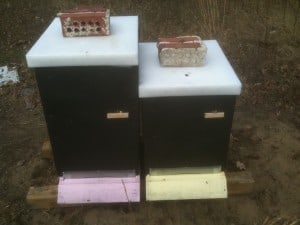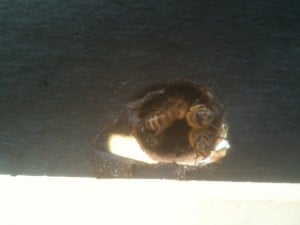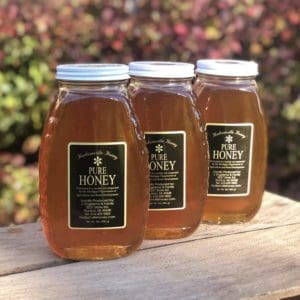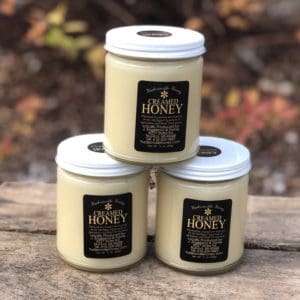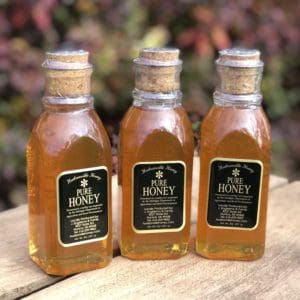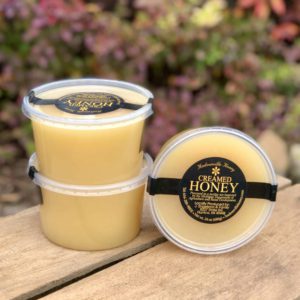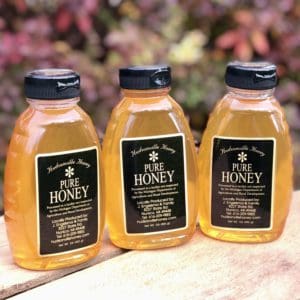We recently experienced that February thaw we were waiting for here in Michigan. I couldn’t wait to get over to our apiary to see how my girls fared over the cold winter months. We were quite happy to discover that at the moment all of our colonies that went into the winter are still alive! While we aren’t out of the woods yet, we are nearing the end of our deep freeze months, and in April we’ll be able to start feeding the colonies to stimulate buildup. A worker bee’s lifespan during the busy summer months is only around six weeks, but the young bees that develop during the Fall months after the nectar sources have disappeared will actually survive for months – long enough to allow brood rearing to resume again (on a small scale) in late winter.
During the winter in a northern climate like ours, the bees cluster closely together to generate and conserve heat. If the cluster is healthy and large enough and has adequate honey and pollen stores, it will be able to maintain heat in the center of the cluster of around 93 degrees Fahrenheit. You will notice there are a lot of “ifs” in that previous sentence. As beekeepers we attempt to help the bees survive by first and foremost making sure they have plenty of surplus honey and pollen at the outset of Winter. We also try to keep the Varroa mite counts low in late Summer/Fall. When the temperature begins to drop we wrap our hives in a layer of tar paper. This eliminates any significant drafts from cracks in the hives, and also allows the colony to absorb heat on a milder sunny winter day.
Ventilation is also critical to prevent condensation buildup within the hive. When temperatures drop, a wet bee is a dead bee. We accomplish this by boring a hole in the upper hive body, and also offsetting our outer covers slightly with a wood shim. The hole also allows the bees to get in and out of the hive as dead bees and other debris begin to fall to the bottom board and clog up their normal entrance on the bottom of the hive. We reduce the normal entrance substantially to keep the mice, skunks and other rodents from entering and damaging the hives while the bees are clustered and not so able to defend themselves.
The ability to exit and re-enter the hive is actually really important. On a warmer Winter day the bees will take what amounts to a bio break… a much needed “cleansing” flight to rid themselves of the waste they’ve accumulated while consuming their stores to generate heat in the cluster. On days like this the hives and the snow around them will be cover with brown spots. You wouldn’t want to park your car within range of a beehive during the Winter!
We also took advantage of the mild weather to put candy boards on a few of the hives that were lighter and may soon deplete their stores.
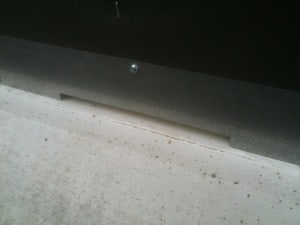
We use screwed on metal entrance reducers on the hives during the Winter months to keep the mice at bay.

